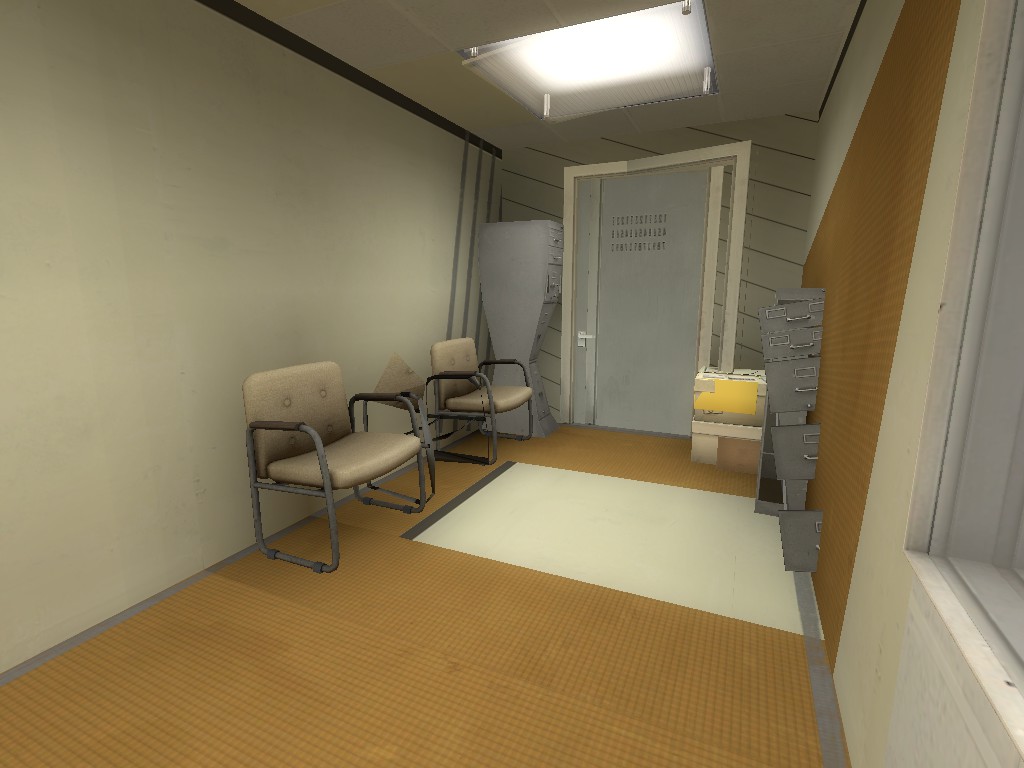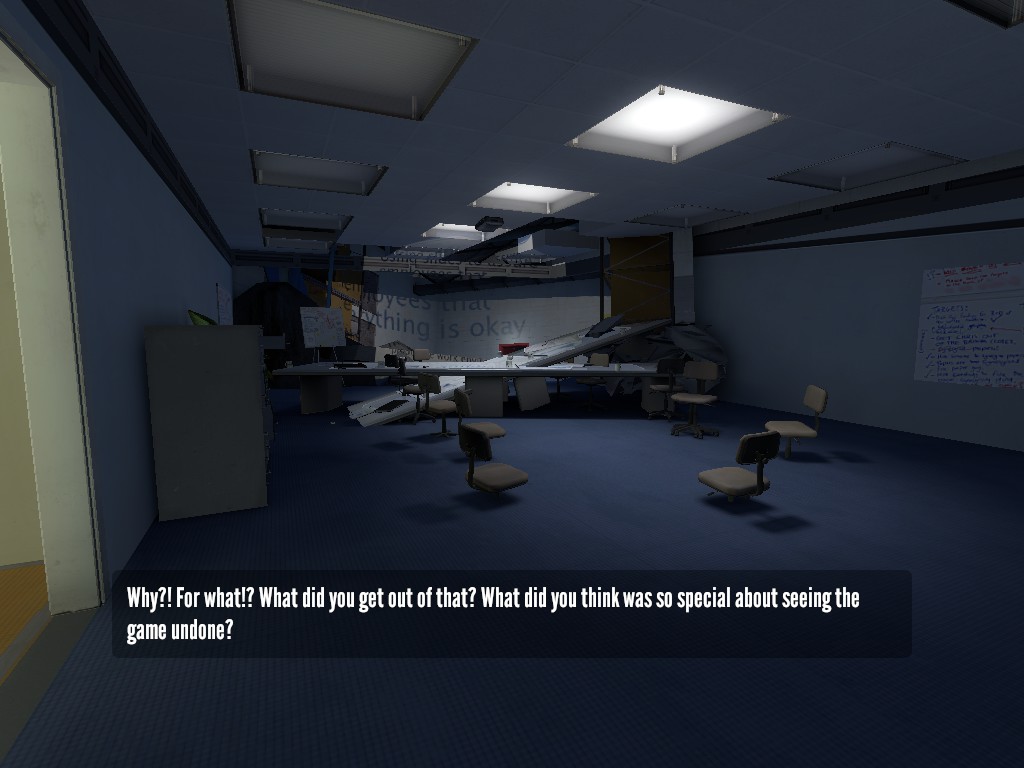The Stanley Parable is a single-player walking simulator by Galactic Cafe. It is playable on PC, MacOS, and Linux. The intended audience seems to be a pretty large range of older children and adults. Below is my analysis of the formal elements of this game (note that I did not fully complete the game, so some of my analysis may have some holes in it).
- Players: The Stanley Parable is a single-player game
- Objectives: The objective of this game is not that transparent; I believe this game falls more under the user-directed category, as part of the main gameplay is the user making choices (if available) and experiencing what occurs in the environment of the game.
- Outcomes: The outcome of this game seems to be different endings depending on the choices the user makes. I did not play until I reached the end for this assignment, so I can’t speak to any specific ending.
- Procedures / rules: Players interact with the game mainly through walking, and occasionally clicking on objects to interact with them. By walking, players are able to make decisions when options arise, such as taking the right door instead of the left.
- Boundaries: The boundaries of this game is the screen, and the auditory feedback of the game; much of the “magic” of this game is related to the narrator’s commentary, which I will talk about when analyzing how this game tells a story / creates fun.
On the story of The Stanley Parable, the overarching story is still not super clear to me, even after playing the game for a few hours. It seems like the game is a narration on the illusion of choice in games, and the game comes off as extremely meta and frequently uncomfortable.

Given that most of the gameplay is through making choices by walking around and interacting with the environment, the game depends significantly on the environment to tell the story. To me, the two largest parts of the environment that really drives the narrative home are the choice of sterile office environment as the “base” of the environment, and the choice of narrator voice and styling.
Office environment
Corporate offices tend to be sterile and bland, with the magical ability of having different room configurations while feeling almost exactly the same. The hallway-driven office environment with doors lends naturally into the choices the player makes when choosing which “fork” of the road to traverse. Additionally, the standard and sterile expected regularity of office objects makes it really obvious when the game enters “chaotic” states where the narrator blames the player for causing the game to break: cabinets become slanted and morphed, lines are no longer at 90 degrees, it’s almost like a Salvador Dalí piece — these things are extra chaotic because of the player’s expectations of a very regular, sterile office environment.

Narration
The narrator really drives home the story (at least the parts I’ve experienced). The frequency of narration in the beginning of the game is quite sparse; the narrator is very official-sounding, and only comes in when the player is faced with a choice (to instructor the player to pick a certain one), and after the player has made a decision (commenting on their decision to follow or not follow the previous instruction). This choice in the beginning of the game to play audio during these pivotal moments helps drive home the concept that this game is about choices and decisions. In the route I played, I kept going against the narrator’s instructions; the narration become less “objective” and more unreliable / chaotic as I continued to do so; this paired quite well with the environment deconstructing, and the narrator became more unreliable and their motivation to construct a “perfect” story started getting revealed.

Overall The Stanley Parable does a really great job of immersing the player in this sterile office environment that descends into chaos via the player’s decisions. Despite having relatively simple mechanics (walking in the environment), the game designers are able to convey a sense of confusion and chaos from the player’s decision by using the traditionally sterile office environment, as well as the changing narration. I would like to finish this game, but I get really motion sick playing first-person games 🙁



